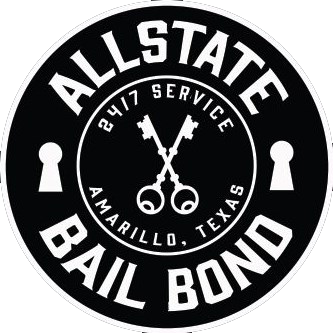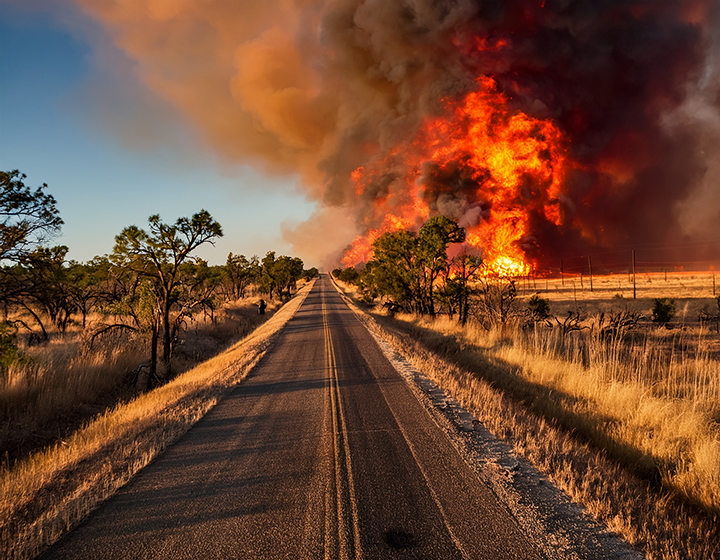Texas Panhandle wildfires are sweeping through The High Plains. In this blog, we provide a map of the affected areas and state-wide burn bans.
People know the region for its expansive landscapes, sweeping plains, and dry, hot summers. Wildfires also threaten the region. Each year, wildfires in the Texas Panhandle claim thousands of acres, endanger communities and disrupt lives.
It’s important to understand the dynamics of these fires and the importance of taking precautions. In this blog post, we explore:
- The Texas Panhandle wildfires
- The risks involved
- How to stay informed
- What you need to know about burn bans and violations
What Causes Texas Panhandle Wildfires?
A variety of factors, from lightning strikes to human negligence, can cause wildfires in the Texas Panhandle.
Fires spread quickly and uncontrollably due to these conditions. Additionally, the dry grasslands and abundant vegetation catch fire easily, especially during the warmer months.
Climate change has also played a role in exacerbating the severity and frequency of wildfires in the region. With changing weather patterns, extended periods of dry weather are becoming more common, further increasing the risk of wildfires.
The National Weather Service reports that certain areas in the Texas Panhandle are particularly susceptible to fire hazards. Dry conditions, high winds, and low humidity levels heighten the risk.
Stay Informed: Texas Panhandle Wildfires Map
One of the most effective ways to stay informed about the current state of wildfires in the region is to consult the Texas Panhandle wildfires map from the Texas A&M Forest Service. This map provides real-time updates on fire locations, burn areas and emergency advisories. It’s a valuable tool for residents and emergency responders to track wildfires and understand their potential impact.
By keeping an eye on the wildfires Texas Panhandle map, you can stay aware of the latest developments, whether you’re trying to avoid wildfire areas or looking to help a neighbor in distress.

Wildfires in Texas Panhandle Today
Wildfires in Texas Panhandle today can be unpredictable and dangerous. The fires can spread rapidly due to strong winds, hot temperatures and dry conditions, making it essential to stay informed about current fire alerts.
For example, during a wildfire outbreak, emergency services may issue evacuation orders for affected communities. If you live in the Texas Panhandle, it’s important to have an emergency plan in place in case you need to evacuate quickly.
In addition to the threat to personal safety, wildfires can also destroy crops, wildlife habitats, and homes. The Salvation Army often provides assistance to those displaced by wildfires, offering shelter, food, and other vital resources. The organization plays a significant role in supporting the community during these challenging times, helping people get back on their feet after a devastating wildfire event.
Burn Bans and Their Importance
To help prevent wildfires in the Texas Panhandle, local governments often implement burn bans during periods of high fire risk. View a map of Texas burn bans here.
A burn ban is a temporary restriction on outdoor burning activities, such as burning brush, trash or any materials that could easily ignite a fire. Local authorities enforce these burn bans strictly during the peak wildfire seasons. Violating a burn ban may lead to severe penalties, including fines or even jail time.

What Happens if You Violate a Burn Ban in Potter or Randall Counties?
Violating a burn ban in Potter or Randall counties is a serious offense that can lead to significant consequences. If you are caught burning when a ban is in effect, you could face substantial fines and end up on local mugshots sites. In some cases, the fine may range from $500 to $1,000, depending on the severity of the violation and whether the fire caused any damage to nearby property or natural resources. Additionally, you could be required to pay restitution for damages caused by the fire.
If you fail to adhere to a burn ban and it leads to a wildfire, you may also face criminal charges. In extreme cases, you could be arrested and taken to jail.
If you or someone you know gets arrested for violating a burn ban, it is important to contact Allstate Bail Bond in Amarillo, Texas. They specialize in helping individuals who are arrested for such offenses. Allstate Bail Bond offers fast, reliable services and can assist you with securing a bail bond to get out of jail quickly. If you’re facing charges for violating a burn ban, call them at 806-379-6699 for assistance.
Why Are Burn Bans Necessary?
Authorities implement burn bans to help reduce the risk of wildfires during times of extreme fire danger. During drought conditions, the risk of fire ignition is higher. Unfortunately, fires can quickly spread uncontrollably.
Burn bans protect local residents’ lives and properties. They also preserve valuable agricultural land in the region. Farmers and ranchers in the Panhandle depend on the land for their livelihood. An uncontrolled fire could ruin years of hard work in an instant.
Additionally, wildfires can put a significant strain on emergency services. Firefighters, police, and medical personnel work tirelessly to combat wildfires and protect residents. If the public doesn’t adhere to burn bans, it creates additional pressure on these first responders, who are already stretched thin.
The Role of the National Weather Service in Wildfire Prevention
The National Weather Service (NWS) monitors wildfire risks in the Texas Panhandle. They provide weather forecasts, fire weather warnings, and alerts about hazardous conditions that could lead to a wildfire. By keeping an eye on NWS reports, residents can stay ahead of potential fire dangers and take necessary precautions to protect themselves and their property.
The NWS collaborates with local authorities and emergency services to issue warnings about wildfires and advise the public on the best course of action. This can include evacuations, sheltering in place, or other steps to minimize harm. When combined with the Texas Panhandle wildfires map, these resources offer invaluable information for staying safe during fire season.
How You Can Help Prevent Wildfires
While wildfire prevention is largely the responsibility of local authorities and emergency services, there are several steps you can take as an individual to help reduce the risk of wildfires in your area:
- Adhere to Burn Bans: Always follow burn bans and avoid outdoor burning during periods of high fire danger.
- Create Defensible Space Around Your Home: Clear dead vegetation, dry leaves, and other combustible materials from around your house to create a defensible space.
- Maintain Fire Safety Equipment: Ensure that you have the necessary fire safety equipment, including fire extinguishers, hoses, and a fire emergency kit.
- Report Suspicious Behavior: If you notice any suspicious activity related to fire starting, report it to the authorities immediately.
Taking these precautions, combined with staying informed about current wildfires Texas Panhandle maps, can help keep you, your loved ones, and your community safe.

Conclusion
Texas Panhandle wildfires are a real and growing threat. Understanding how to stay safe is crucial for anyone living in the region. Stay informed through the Texas Panhandle wildfires map. Importantly, always follow burn bans to reduce the risk of being affected by a wildfire.
If you’re arrested for violating a burn ban in Potter or Randall counties, call Allstate Bail Bond at 806-379-6699. They will help you get released quickly so you can focus on what matters most: keeping your home and family safe.
Let’s all do our part in preventing wildfires and supporting others during times of crisis. Together, we can work to protect the Texas Panhandle and its beautiful landscapes.

